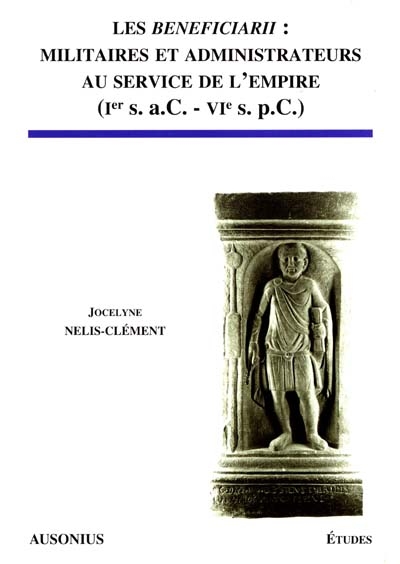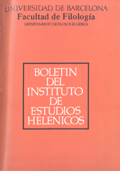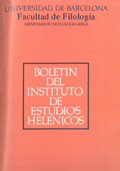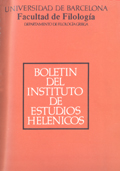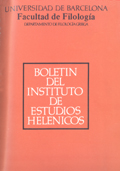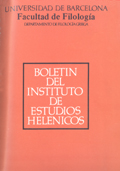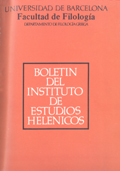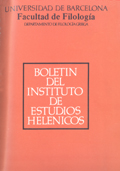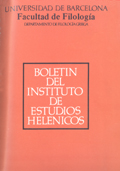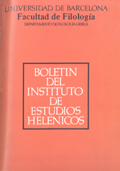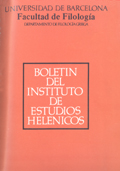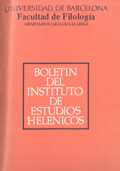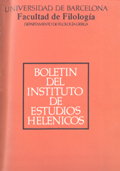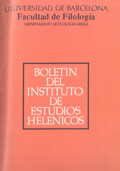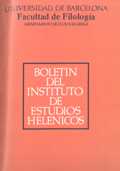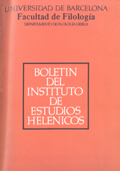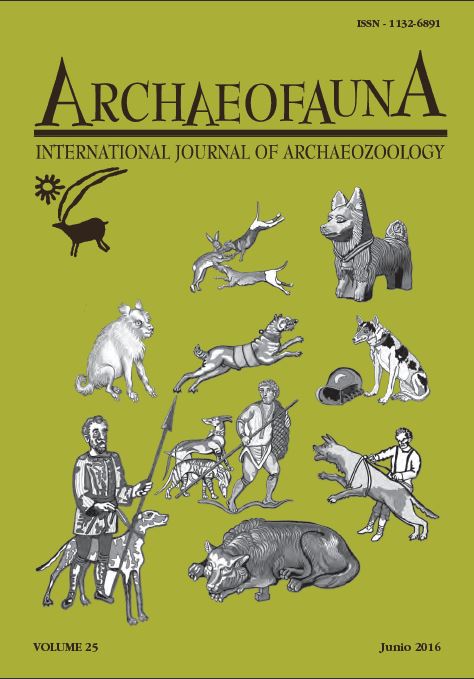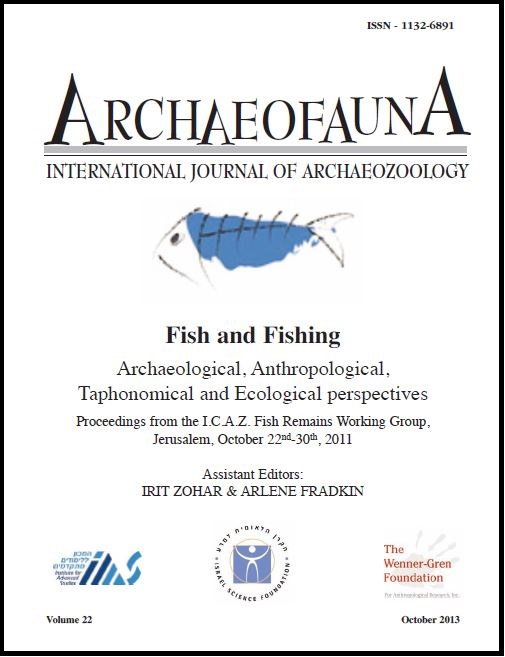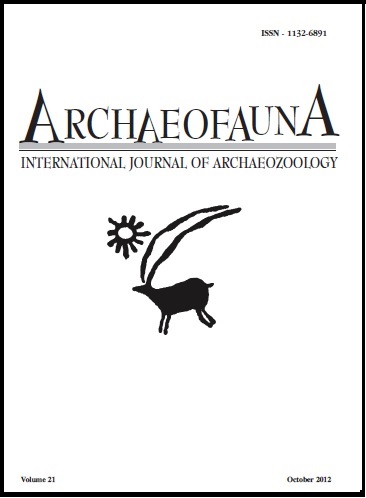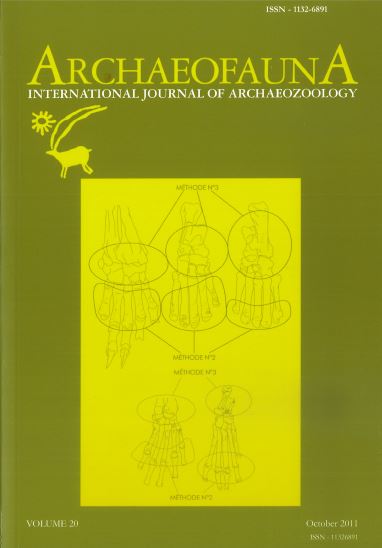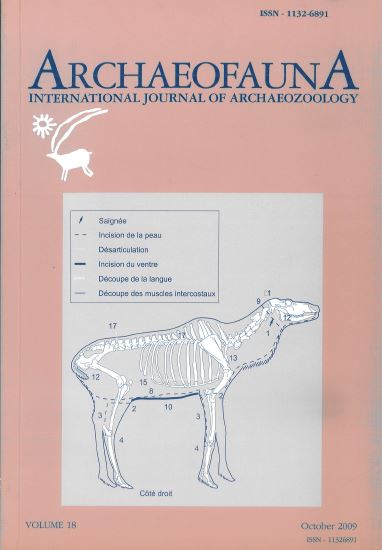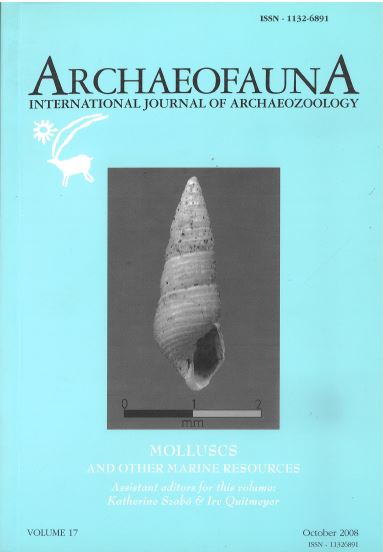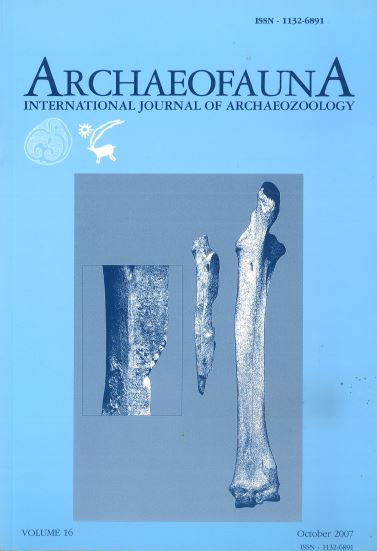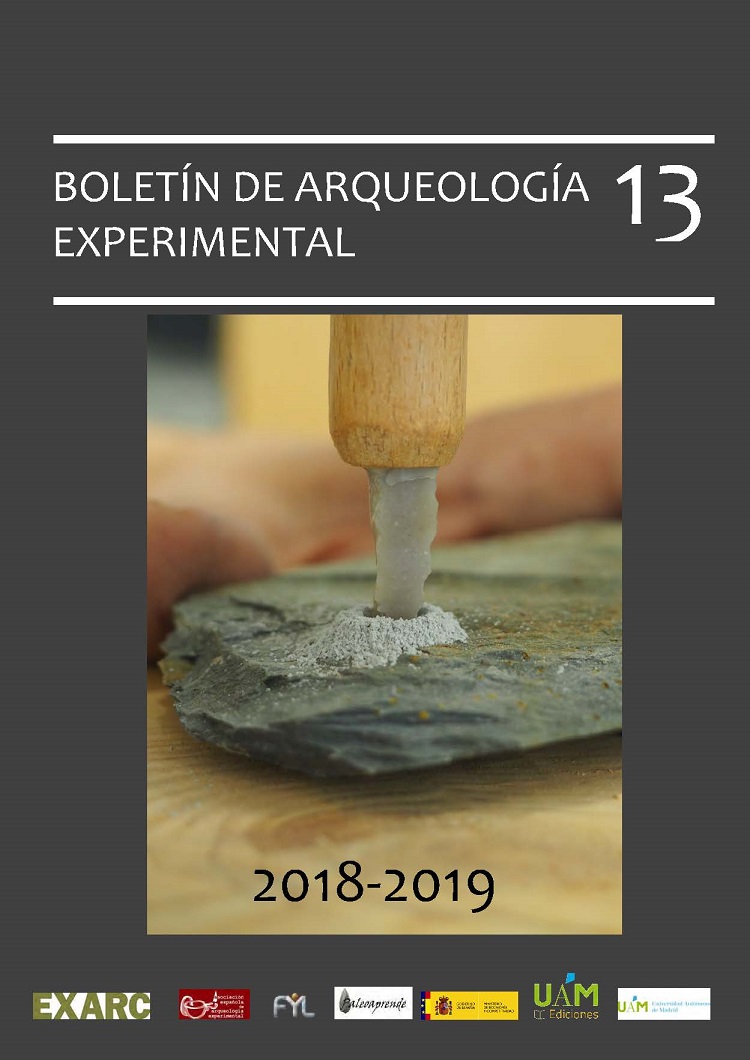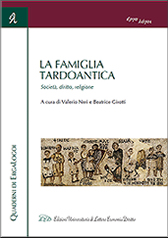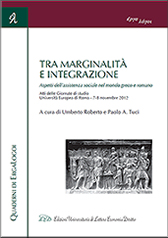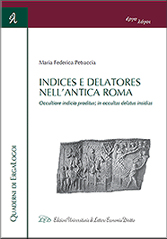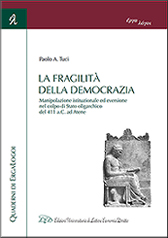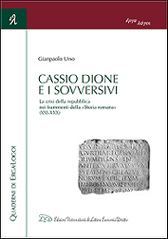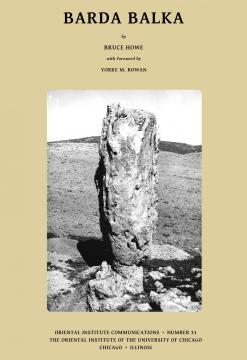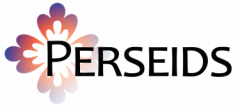Recently Published Open Access Books and Articles at Archaeopress
Eastern Sudan in its SettingThe archaeology of a region far from the Nile Valley by Andrea Manzo. viii+82 pages; illustrated throughout with 38 colour plates. Available both in print and Open Access. Cambridge Monographs in African Archaeology 94. ISBN 9781784915599.
Eastern Sudan, like other regions far away from the Nile valley, has often been overlooked historically on account of a kind of prejudice towards areas lacking in monumental or urban remains or evidence of any literary production. Despite the relevance of the deserts and marginal areas becoming increasingly evident in the last year or so, in Sudan only a few research projects have been conducted in these regions. The ongoing research project in Eastern Sudan by the University ‘L’Orientale’ has provided a preliminary reconstruction of the history of the region from c. 6000 BC to AD 1500. This publication outlines this reconstruction and also considers the more general setting known for the other regions of northeastern Africa. Several issues remain to be clarified and understanding of some phases is still limited, nevertheless it can be safely stated that Eastern Sudan, was in ancient times, as it is now, a crossroads between the Nile basin, Eastern Desert, the Ethio-Eritrean highlands and the Red Sea, represented a crucial region in several respects: the spread of domestic crops and animals towards the Ethio-Eritrean highlands, the spread of the Sahelian crops towards India via the Red Sea and Arabia, as well as the long-distance trade network characterizing northeastern Africa in the 3rd and 2nd millennia BC.
This book is also available to buy in paperback priced £25.00.
Access Archaeology:This imprint is designed to make archaeological research accessible to all and to present a low-cost (or no-cost) publishing solution for academics from all over the world. Material ranges from theses, conference proceedings, catalogues of archaeological material, excavation reports and beyond. We provide type-setting guidance and templates for authors to prepare material themselves designed to be made available for free online via our Open Access platform and to supply in-print to libraries and academics worldwide at a reasonable price point. Click here to learn more about publishing in Access Archaeology.
Note for downloading: PDF displays best in Chrome. For best results right-click 'Download (pdf)' below and use the option 'Save link as...' to save a local copy to your computer/device. Please ensure file has finished downloading before opening and be sure to use desktop PDF reading software rather than browser-based software, otherwise file may appear corrupted.
The Death of the Maiden in Classical AthensΟ ΘΑΝΑΤΟΣ ΤΗΣ ΑΓΑΜΟΥ ΚΟΡΗΣ ΣΤΗΝ ΑΘΗΝΑ ΤΩΝ ΚΛΑΣΙΚΩΝ ΧΡΟΝΩΝ by Katia Margariti. xlviii+636 pages; 105 plates in colour and black & white. Text in Greek with extensive 63 page english summary. Available both in print and Open Access.ISBN 9781784915476.
The present study examines the death of maidens in classical Athens, combining the study of Attic funerary iconography with research on classical Attic maiden burials, funerary inscriptions, tragic plays, as well as the relevant Attic myths.
The iconography of funerary reliefs focuses on the idealized image of the deceased maiden, as well as the powerful bonds of love and kinship that unite her with the members of her family, whereas the iconography of vases emphasizes the premature death of the maiden, the pain of loss and mourning felt by her family, as well as the observance of the indispensable funerary rites concerning her burial and ‘tomb cult’. Particularly interesting is the fact that the ‘traditional’ theory according to which the loutrophoros marked the graves of the unmarried dead alone has been proven non valid.
The study of classical Attic maiden burials indicates that the prematurely dead maidens were buried as children who didn’t live long enough to reach adulthood.
The untimely death of maidens in Attic drama and mythology is beneficial to the family or the city. In great contrast to that, the premature death of real - life Athenian maidens was a terrible disaster for the girls’ families, as well as the polis itself. Despite this, the iconography of dead maidens in classical Athens is in accordance with the ‘image’ of the deceased maidens presented by funerary epigrams, tragedy, and mythology. It has to be noted though, that the same is not true in the case of maiden burials.
This book is also available to buy in paperback priced £110.00.
Access Archaeology:This imprint is designed to make archaeological research accessible to all and to present a low-cost (or no-cost) publishing solution for academics from all over the world. Material ranges from theses, conference proceedings, catalogues of archaeological material, excavation reports and beyond. We provide type-setting guidance and templates for authors to prepare material themselves designed to be made available for free online via our Open Access platform and to supply in-print to libraries and academics worldwide at a reasonable price point. Click here to learn more about publishing in Access Archaeology.
Note for downloading: PDF displays best in Chrome. For best results right-click 'Download (pdf)' below and use the option 'Save link as...' to save a local copy to your computer/device. Please ensure file has finished downloading before opening and be sure to use desktop PDF reading software rather than browser-based software, otherwise file may appear corrupted.
Materials, Productions, Exchange Network and their Impact on the Societies of Neolithic EuropeProceedings of the XVII UISPP World Congress (1–7 September 2014, Burgos, Spain) Volume 13/Session A25a edited by Marie Besse and Jean Guilaine. vi+82 pages; illustrated throughout in black & white. Available both in print and Open Access.ISBN 9781784915254.
Scholars who will study the historiography of the European Neolithic, more particularly with regards to the second half of the 20th century and the beginning of the 21st century, will observe a progressive change in the core understanding of this period. For several decades the concept of ‘culture’ has been privileged and the adopted approach aimed to highlight the most significant markers likely to emphasise the character of a given culture and to stress its specificities, the foundations of its identity. In short, earlier research aimed primarily to highlight the differences between cultures by stressing the most distinctive features of each of them. The tendency was to differentiate, single out, and identify cultural boundaries. However, over the last few years this perspective has been universally challenged. Although regional originality and particularisms are still a focus of study, the research community is now interested in widely diffused markers, in medium-scale or large-scale circulation, and in interactions that make it possible to go beyond the traditional notion of ‘archaeological culture’. The networks related to raw materials or finished products are currently leading us to re-think the history of Neolithic populations on a more general and more global scale. The aim is no longer to stress differences, but on the contrary to identify what links cultures together, what reaches beyond regionalism in order to try to uncover the underlying transcultural phenomena. From culturalism, we have moved on to its deconstruction. This is indeed a complete change in perspective. This new approach certainly owes a great deal to all kinds of methods, petrographic, metal, chemical and other analyses, combined with effective tools such as the GIS systems that provide a more accurate picture of the sources, exchanges or relays used by these groups. It is also true that behind the facts observed there are social organisations involving prospectors, extractors, craftsmen, distributors, sponsors, users, and recyclers. We therefore found it appropriate to organise a session on the theme ‘Materials, productions, exchange networks and their impact on the societies of Neolithic Europe’.
How is it possible to identify the circulation of materials or of finished objects in Neolithic Europe, as well as the social networks involved? Several approaches exist for the researcher, and the present volume provides some examples.
This book is also available to buy in paperback priced £24.00.
The Ancient Skyscape over the Sanctuary of Egyptian Gods in MarathōnTaken from Liber Amicorum–Speculum Siderum: Nūt Astrophoros edited by Nadine Guilhou with the help of Antigoni Maniati. Pages 153-166.
By Themis G. Dallas
In the present paper we study the orientation of the sanctuary of Egyptian Gods in Marathōn and calculate that it belongs to the Equinoctial Group in the classification of Egyptian temples. We also reproduce the ancient skyscape over the area and associate astronomical phenomena with the major feasts most probably celebrated in that temple. We conclude that Navigium Isidum and Inventio Osiridis may be associated with the acronychal rising and setting of Canopus (or the constellation of Argo Navis in general) and Lychnapsia with the Perseids meteor–shower. Connections of Pēlusia and Serapia to astronomical phenomena are more problematic, but we also examine such possibilities.
KEY WORDS: Marathōn, Sanctuary of Isis, Ptolemaic & Helleno–Roman Period, Ancient Astronomy, Canopus, Ancient Skyscapes, Ancient Egyptian & Hellenic Feasts.
Instant Messaging: Dance, Text, and Visual Communication on Archaic Corinthian and Athenian Vases by Tyler Jo SmithTaken from Epigraphy of Art edited by Dimitrios Yatromanolakis. Pages 145-163.
Although a great deal has been written over the years about the association between ancient Greek vases and drama, far less attention has been given to the relationship between figure-decorated pottery and dance. On the one hand, this hardly seems surprising, especially in the case of tragedy, which drew its subjects from the shared textual tradition of epic and myth. On the other hand, it is very surprising, as dance would have been a part of everyday experience. ...
Tracing Letters on the Eurymedon Vase: On the Importance of Placement of Vase-Inscriptions by Georg Simon GerleignerTaken from Epigraphy of Art edited by Dimitrios Yatromanolakis. Pages 165-184.
This chapter intends to show the vital importance of considering very carefully the placement of an inscription within a vase-painting when interpreting it, using the much-discussed Eurymedon Vase as a case in point...
Production, consumption and political complexity: early medieval pottery in Castile and Southern Tuscany (7th-10th centuries) by Francesca GrassiTaken from Social complexity in early medieval rural communities edited by Juan Antonio Quirós Castillo. Pages 91-112.
This paper, which compares two groups of rural villages in north-western Spain and central Italy, is inspired by the first results of the research project Earmedcastile, currently ongoing at the University of the Basque Country and funded by the H2020 Program. It focuses on the study of the complex dynamics of social, political and economic life in the rural areas of the ancient County of Castile and Southern Tuscany. The systems of production, distribution and consumption of household ceramics in the 7th-10th centuries are analysed, and the results are related to other archaeological indicators at the sites.
After a review of the European state of the art on material culture studies in early medieval societies, the methods and objectives of the research underway in Spain are presented. The first case studies from the County of Castile and a case study from Italy are discussed, using the same methodology.
The purpose is to show the potentiality and limitations of the use of ceramics in the study of early medieval society, as well as the political and economic structure of these territories.
Inequality and social complexity in peasant societies. Some approaches to early medieval north-western IberiaTaken from Social complexity in early medieval rural communities by Juan Antonio Quirós Castillo. Pages 1-16.
This introduction provides an overview of the two main topics analysed in this book in the framework of medieval peasant studies: social inequality and social complexity in peasant communities. The chapter is divided into three sections. Firstly, Iberian case studies are presented, followed by an explanation of the concepts and terminology used throughout the book. Secondly, the single chapters that follow are contextualised from the perspective of settlement patterns, food, craft production systems and social practices. Finally, some generalisations are made in order to connect single case studies with general trends.
Internal-Handled Bowls – Puzzling pots from Bronze Age MesopotamiaTaken from Parcours d’Orient: Recueil de textes offert à Christine Kepinski by Ulrike Bürger & Peter A. Miglus. Pages 21-34.
Recent excavations at Bakr Awa in Iraqi Kurdistan yielded a peculiar type of pottery vessel with inward bent handles. The authors’ curiosity was aroused and lead to an intensive literature research for comparisons. The surprising result was a catalogue of at least sixty specimens from all over southern and eastern Mesopotamia, including several variants as well as miniature vessels. Furthermore, it became apparent that this type had been in use for quite a long time, from the Early Dynastic to the Isin-Larsa Period. A wide range of interpretations for their function can be found in the literature, but the most convincing one is that as an enhanced pot stand.
Statio amoenaSostare e vivere lungo le strade romane edited by Patrizia Basso and Enrico Zanini. viii+264 pages; illustrated throughout in black & white. All papers in Italian with English abstracts. Available both in print and Open Access. 295 2016. ISBN 9781784914998.
The Roman road system was the main service infrastructure for administrative management, economic operation and defense of the empire.
Along with roads, a key element of this infrastructure were the resting places more or less directly linked with vehiculatio / cursus publicus, or with a system run or controlled by the state to ensure essential services (safe stop, supplies, maintenance of horses and other animals) to those traveling on behalf of the public administration.
New archaeological research and new studies on a rich and diverse body of extra-archaeological sources have recently reported the attention of the international scientific community on the subject of parking places, within the more general theme of the smaller settlements in the Roman world and their evolution in late antiquity and early medieval times.
This volume brings together contributions from scholars from three different generations, starting from different sources and methodological approaches, converging towards the construction of an area of common reflection on a theme still relatively underdeveloped. The goal is to lay the foundation for a deepening of the interdisciplinary debate and to develop new research projects.
This book is also available to purchase in paperback priced £40.00.
Italian description:
Il sistema stradale romano rappresentava la principale infrastruttura di servizio per la gestione amministrativa, il funzionamento economico e la difesa dell’impero.
Insieme con le strade, elemento fondamentale di questa infrastruttura erano i luoghi di sosta più o meno direttamente legati con la vehiculatio/cursus publicus, ovvero con il sistema gestito o controllato dallo stato per assicurare i servizi indispensabili (sosta sicura, rifornimenti, cambio dei cavalli, manutenzione di animali e mezzi) a chi viaggiava per conto della pubblica amministrazione.
Nuove ricerche archeologiche e nuovi studi su un ricco e variegato corpus di fonti extra-archeologiche hanno recentemente riportato l’attenzione della comunità scientifica internazionale sul tema dei luoghi di sosta, all’interno della tematica più generale degli insediamenti minori nel mondo romano e della loro evoluzione in epoca tardoantica e altomedievale.
Questo volume raccoglie contributi di studiosi di tre diverse generazioni che, partendo da sistemi di fonti e da approcci metodologici differenti, convergono verso la costruzione di un terreno di riflessione comune su un tema ancora relativamente poco frequentato. L’obiettivo è quello di gettare le basi per un approfondimento del dibattito interdisciplinare e per lo sviluppo di nuovi progetti di ricerca, più organici e specificamente mirati.
Journal of Hellenistic Pottery and Material Culture Volume 1 2016 edited by Dr Patricia Kögler, Dr Renate Rosenthal-Heginbottom and Prof. Dr Wolf Rudolph (Heads of Editorial Board). xiv+212 pages; illustrated throughout in colour and black & white. Available in print and Open Access. 1 2016. ISBN 2399-1852-1-2016.
ISSN 2399-1844 (Print) ISSN 2399-1852 (online)
Table of Contents:
A Fill from a Potter’s Dump at Morgantina – by Shelley Stone
Trade in Pottery within the Lower Adriatic in the 2nd century BCE – by Carlo De Mitri
Hellenistic Ash Containers from Phoinike (Albania) – by Nadia Aleotti
Pottery Production in Hellenistic Chalkis, Euboea. Preliminary Notes – by Yannis Chairetakis
A Terracotta Figurine of a War Elephant and Other Finds from a Grave at Thessaloniki – by Eleni Lambrothanassi & Annareta Touloumtzidou
Moldmade Bowls from Straton’s Tower (Caesarea Maritima) – by Renate Rosenthal-Heginbottom
Greco-Roman Jewellery from the Necropolis of Qasrawet (Sinai) – by Renate Rosenthal-Heginbottom
ARCHAEOLOGICAL NEWS AND PROJECTS
Panathenaic Amphorae of Hellenistic and Roman Times – by Martin Streicher
BOOK REVIEWS
Shelley C. Stone, Morgantina Studies 6. The Hellenistic and Roman Fine Wares – by Peter J. Stone
Pia Guldager Bilde & Mark L. Lawall (eds.), Pottery, Peoples and Places, BSS 16 – by Kathleen Warner Slane
Susan I. Rotroff, Hellenistic Pottery. The Plain Wares, Agora 33 – by Patricia Kögler
Also available in print
2016 PRINT SUBSCRIPTION RATES (1 issue in 2016):
(please order via the downloadable form - click here to follow the link):
£50.00 (plus standard shipping rates)
Agents will receive 25% discount on institutional print price including shipping rates as stated
Individuals (please order via the website - click here to follow the link):
£30.00 (plus standard shipping rates)
Note for downloading: PDF displays best in Chrome. For best results right-click 'Download (pdf)' below and use the option 'Save link as...' to save a local copy to your computer/device (or hold 'Alt' and click for Mac users). Please ensure file has finished downloading before opening, otherwise file may appear corrupted.
Archeologia dell’acqua a Gortina di Creta in età protobizantina by Elisabetta Giorgi. x+288 pages; illustrated throughout in black & white. Italian text with English abstracts for each chapter. Available both in print and Open Access. Limina/Limites: Archaeologies, histories, islands and borders in the Mediterranean (365-1556) 5. ISBN 9781784914455.
Ancient aqueducts have long commanded the attention of archaeologists, both for their intrinsic, monumental importance and for their significance as infrastructures closely related to the concept of civilisation. An aqueduct, in fact, is an artefact that has a great potential for providing information concerning at least two major aspects of ancient society: those relating to structural, technical, and engineering matters, and those relating to building and construction technology. These topics have enjoyed considerable attention in past studies, and in recent years they have also been integrated with a multi-disciplinary and contextual approach. They have further increased the potential of the analysis of ancient hydraulic systems, turning them into historical subjects capable of expanding our knowledge of the urban and social transformation of ancient cities and their territories.
The current study of the early Byzantine aqueduct of Gortyn (Crete) follows this tradition, but starts from a viewpoint related not so much to the aqueduct itself, as to a series of questions about the city: what was the appearance of Gortyn in the early Byzantine era? How did the inhabitants live? Where did they live and what did they do for living?
The aqueduct was born with the Roman city and accompanied it for its entire lifetime, constituting the backbone around which the various forms of urban settlement were redrawn at each major historical stage. Its vital link with everyday life makes the aqueduct a key witness for the study of the transformations of the city over the long term.
This book is also available to buy in paperback priced £40.00.
Access Archaeology:This imprint is designed to make archaeological research accessible to all and to present a low-cost (or no-cost) publishing solution for academics from all over the world. Material ranges from theses, conference proceedings, catalogues of archaeological material, excavation reports and beyond. We provide type-setting guidance and templates for authors to prepare material themselves designed to be made available for free online via our Open Access platform and to supply in-print to libraries and academics worldwide at a reasonable price point. Click here to learn more about publishing in Access Archaeology.
Note for downloading: PDF displays best in Chrome. For best results right-click 'Download (pdf)' below and use the option 'Save link as...' to save a local copy to your computer/device. Please ensure file has finished downloading before opening, otherwise file may appear corrupted.
Enfoques metodológicos en el estudio de los asentamientos fortificados de la edad del hierroAproximación teórica a la metodología de estudio sobre la defensa del territorio en la Prehistoria Final Europea by Óscar Rodríguez Monterrubio. 145 pages; illustrated throughout in colour and black & white. Spanish text with English Abstract. Available both in print and Open Access.ISBN 9781784914493.
This volume focuses on the main methodological perspectives currently existing in studies on Iron Age fortified settlements. Current investigations can be characterised according to three methodological approaches: analytic, landscape and componential analysis. These approaches can be traced since the 70s and are found all around Europe from the Baltic regions to the Mediterranean coast. They are examples of diachronic and versatile methodological procedures in use today and applicable to different contexts of the European Iron Age. We introduce digital archaeology at the end of this paper. In each one of the chapters we shall focus not only on the theoretical perspective of the approach but also on its practical application to the study of actual fortified settlements from different geographic contexts. In conclusion, and despite the difficulties of using these methods when investigating Iron Age settlements, they seem to be as versatile as they are adaptable and they have evolved adopting new methods of tele-detection and geographic information systems which update and refresh them as current methodological approaches.
This book is also available to buy in paperback priced £30.00.
Access Archaeology:This imprint is designed to make archaeological research accessible to all and to present a low-cost (or no-cost) publishing solution for academics from all over the world. Material ranges from theses, conference proceedings, catalogues of archaeological material, excavation reports and beyond. We provide type-setting guidance and templates for authors to prepare material themselves designed to be made available for free online via our Open Access platform and to supply in-print to libraries and academics worldwide at a reasonable price point. Click here to learn more about publishing in Access Archaeology.
Note for downloading: PDF displays best in Chrome. For best results right-click 'Download (pdf)' below and use the option 'Save link as...' to save a local copy to your computer/device. Please ensure file has finished downloading before opening, otherwise file may appear corrupted.
Journal of Greek Archaeology Volume 1 2016 Sampler edited by John Bintliff (Ed. in Chief). p. i-vi; 109-148; 406-420; 466-470. Black & white and colour illustrations.
Archaeopress is delighted to be launching a new journal in October 2016 with an editorial board headed by John Bintliff (Edinburgh University, U.K. and Leiden University, The Netherlands). The scope of this journal is Greek archaeology both in the Aegean and throughout the wider Greek-inhabited world, from earliest Prehistory to the Modern Era. Thus we include contributions not just from traditional periods such as Greek Prehistory and the Classical Greek to Hellenistic eras, but also from Roman through Byzantine, Crusader and Ottoman Greece and into the Early Modern period. Outside of the Aegean contributions are welcome covering the Archaeology of the Greeks overseas, likewise from Prehistory into the Modern World. Greek Archaeology for the purposes of the JGA thus includes the Archaeology of the Hellenistic World, Roman Greece, Byzantine Archaeology, Frankish and Ottoman Archaeology, and the Postmedieval Archaeology of Greece and of the Greek Diaspora.
This Open Access sampler has been designed to act as an introduction and taster to the scope and style of this new journal. It includes one complete paper and two review articles as well as full contents listings for Volume 1 and subscription information (including some special offers).
This Open Access sampler is available here as a free download and is made available under a Creative Commons Attribution-NonCommercial-NoDerivatives 4.0 International License. Please feel free to re-post online, circulate electronically to colleagues and to host on personal servers.
For more information on the journal please see the dedicated page on our website.
Click here to subscribe to Volume 1, 2016, available from October 2016.
Note for downloading: PDF displays best in Chrome. For best results right-click 'Download (pdf)' below and use the option 'Save link as...' to save a local copy to your computer/device.
Dja’de el-Mughara (Aleppo) by Eric CoqueugniotTaken from A History of Syria in One Hundred Sites by Y. Kanjou and A. Tsuneki (eds). Pages 51-53.
Excavated as part of the rescue campaigns of the Tishreen Dam in the Euphates valley, the Neolithic tell of Dja’de el Mughara has yielded archaeological levels belonging mostly to the 9th millennium BC (9310-8290 cal. BCE). It concerns a crucial phase in the process of Neolithisation, the one which corresponds to the end of the period of gestation, and invention of the domestication of plants (raw agricultural practices but with wild cereals). ...



 The Death of the Maiden in Classical AthensΟ ΘΑΝΑΤΟΣ ΤΗΣ ΑΓΑΜΟΥ ΚΟΡΗΣ ΣΤΗΝ ΑΘΗΝΑ ΤΩΝ ΚΛΑΣΙΚΩΝ ΧΡΟΝΩΝ by Katia Margariti. xlviii+636 pages; 105 plates in colour and black & white. Text in Greek with extensive 63 page english summary.
The Death of the Maiden in Classical AthensΟ ΘΑΝΑΤΟΣ ΤΗΣ ΑΓΑΜΟΥ ΚΟΡΗΣ ΣΤΗΝ ΑΘΗΝΑ ΤΩΝ ΚΛΑΣΙΚΩΝ ΧΡΟΝΩΝ by Katia Margariti. xlviii+636 pages; 105 plates in colour and black & white. Text in Greek with extensive 63 page english summary. Materials, Productions, Exchange Network and their Impact on the Societies of Neolithic EuropeProceedings of the XVII UISPP World Congress (1–7 September 2014, Burgos, Spain) Volume 13/Session A25a edited by Marie Besse and Jean Guilaine. vi+82 pages; illustrated throughout in black & white.
Materials, Productions, Exchange Network and their Impact on the Societies of Neolithic EuropeProceedings of the XVII UISPP World Congress (1–7 September 2014, Burgos, Spain) Volume 13/Session A25a edited by Marie Besse and Jean Guilaine. vi+82 pages; illustrated throughout in black & white.  The Ancient Skyscape over the Sanctuary of Egyptian Gods in MarathōnTaken from Liber Amicorum–Speculum Siderum: Nūt Astrophoros edited by Nadine Guilhou with the help of Antigoni Maniati. Pages 153-166.
The Ancient Skyscape over the Sanctuary of Egyptian Gods in MarathōnTaken from Liber Amicorum–Speculum Siderum: Nūt Astrophoros edited by Nadine Guilhou with the help of Antigoni Maniati. Pages 153-166. Instant Messaging: Dance, Text, and Visual Communication on Archaic Corinthian and Athenian Vases by Tyler Jo SmithTaken from Epigraphy of Art edited by Dimitrios Yatromanolakis. Pages 145-163.
Instant Messaging: Dance, Text, and Visual Communication on Archaic Corinthian and Athenian Vases by Tyler Jo SmithTaken from Epigraphy of Art edited by Dimitrios Yatromanolakis. Pages 145-163. Tracing Letters on the Eurymedon Vase: On the Importance of Placement of Vase-Inscriptions by Georg Simon GerleignerTaken from Epigraphy of Art edited by Dimitrios Yatromanolakis. Pages 165-184.
Tracing Letters on the Eurymedon Vase: On the Importance of Placement of Vase-Inscriptions by Georg Simon GerleignerTaken from Epigraphy of Art edited by Dimitrios Yatromanolakis. Pages 165-184. Production, consumption and political complexity: early medieval pottery in Castile and Southern Tuscany (7th-10th centuries) by Francesca GrassiTaken from Social complexity in early medieval rural communities edited by Juan Antonio Quirós Castillo. Pages 91-112.
Production, consumption and political complexity: early medieval pottery in Castile and Southern Tuscany (7th-10th centuries) by Francesca GrassiTaken from Social complexity in early medieval rural communities edited by Juan Antonio Quirós Castillo. Pages 91-112. Inequality and social complexity in peasant societies. Some approaches to early medieval north-western IberiaTaken from Social complexity in early medieval rural communities by Juan Antonio Quirós Castillo. Pages 1-16.
Inequality and social complexity in peasant societies. Some approaches to early medieval north-western IberiaTaken from Social complexity in early medieval rural communities by Juan Antonio Quirós Castillo. Pages 1-16. Internal-Handled Bowls – Puzzling pots from Bronze Age MesopotamiaTaken from Parcours d’Orient: Recueil de textes offert à Christine Kepinski by Ulrike Bürger & Peter A. Miglus. Pages 21-34.
Internal-Handled Bowls – Puzzling pots from Bronze Age MesopotamiaTaken from Parcours d’Orient: Recueil de textes offert à Christine Kepinski by Ulrike Bürger & Peter A. Miglus. Pages 21-34. Statio amoenaSostare e vivere lungo le strade romane edited by Patrizia Basso and Enrico Zanini. viii+264 pages; illustrated throughout in black & white. All papers in Italian with English abstracts.
Statio amoenaSostare e vivere lungo le strade romane edited by Patrizia Basso and Enrico Zanini. viii+264 pages; illustrated throughout in black & white. All papers in Italian with English abstracts.  Journal of Hellenistic Pottery and Material Culture Volume 1 2016 edited by Dr Patricia Kögler, Dr Renate Rosenthal-Heginbottom and Prof. Dr Wolf Rudolph (Heads of Editorial Board). xiv+212 pages; illustrated throughout in colour and black & white.
Journal of Hellenistic Pottery and Material Culture Volume 1 2016 edited by Dr Patricia Kögler, Dr Renate Rosenthal-Heginbottom and Prof. Dr Wolf Rudolph (Heads of Editorial Board). xiv+212 pages; illustrated throughout in colour and black & white.  Archeologia dell’acqua a Gortina di Creta in età protobizantina by Elisabetta Giorgi. x+288 pages; illustrated throughout in black & white. Italian text with English abstracts for each chapter.
Archeologia dell’acqua a Gortina di Creta in età protobizantina by Elisabetta Giorgi. x+288 pages; illustrated throughout in black & white. Italian text with English abstracts for each chapter.  Enfoques metodológicos en el estudio de los asentamientos fortificados de la edad del hierroAproximación teórica a la metodología de estudio sobre la defensa del territorio en la Prehistoria Final Europea by Óscar Rodríguez Monterrubio. 145 pages; illustrated throughout in colour and black & white. Spanish text with English Abstract.
Enfoques metodológicos en el estudio de los asentamientos fortificados de la edad del hierroAproximación teórica a la metodología de estudio sobre la defensa del territorio en la Prehistoria Final Europea by Óscar Rodríguez Monterrubio. 145 pages; illustrated throughout in colour and black & white. Spanish text with English Abstract.  Journal of Greek Archaeology Volume 1 2016 Sampler edited by John Bintliff (Ed. in Chief). p. i-vi; 109-148; 406-420; 466-470. Black & white and colour illustrations.
Journal of Greek Archaeology Volume 1 2016 Sampler edited by John Bintliff (Ed. in Chief). p. i-vi; 109-148; 406-420; 466-470. Black & white and colour illustrations.
 Dja’de el-Mughara (Aleppo) by Eric CoqueugniotTaken from A History of Syria in One Hundred Sites by Y. Kanjou and A. Tsuneki (eds). Pages 51-53.
Dja’de el-Mughara (Aleppo) by Eric CoqueugniotTaken from A History of Syria in One Hundred Sites by Y. Kanjou and A. Tsuneki (eds). Pages 51-53.











